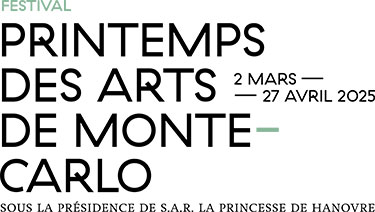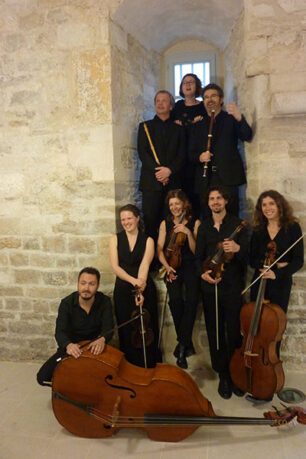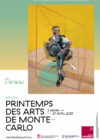Can and should music imitate nature, and which nature? Like the theatre in Aristotle’s Poetics, is it based on mimesis? The learned music of the Middle Ages, which viewed itself as a liberal art on a par with geometry and astronomy, was certainly based on laws considered natural in terms of harmonic relationships, but did not claim to imitate superficial sound phenomena. This kind of imitation appeared during the Renaissance, for example with Janequin’s famous chansons (Les Cris de Paris, La Bataille). The rise of instrumental music in the 17th century was a further step forward. In 1616, Monteverdi wrote: “It is by themselves, and not by speech, that music imitates gusts of wind, the bleating of sheep, the neighing of horses and other noises.”From then on, the taste for imitation would run through the entire history of music right up to the present day, with very different connotations depending on styles and periods.
Carlo Farina’s Capriccio stravagante was published in Dresden in 1626. Its length (twenty minutes) and the use of unusual instrumental techniques for the violin (double strings, plucked or struck strings) make it an exceptional piece in the printed music of the time. But its formal structure is equally astonishing. Fragments of canzone or popular airs (bergamasca) follow one another, sometimes echoing one another from afar, more or less transformed. These rather cheerful, lively episodes are strangely colored, however, in the four-part counterpoint, by bizarre chromaticisms and dissonances. They sometimes seem to get lost in the sands, or are suddenly interrupted by astonishing silences. This strange, daydream-like journey is interspersed with “stations” (as in Mussorgsky’s Pictures at an Exhibition) devoted to the imitation of various instruments and animals. The listener is thus guided on a dreamlike journey through a world of surprising, entertaining or disquieting sound creatures (the dog), in a spirit that is authentically Baroque in its taste for the bizarre and phantasmagorical. The same spirit animates Jean-Philippe Rameau’s La Poule: imitation is merely the pretext for the creation of a whimsical, unpredictable sound character.
Among animal sounds, the rich and varied birdsong have always held a special place. From the Jesuit Kircher in the 17th century to Olivier Messiaen in the 20th, many have sought in them the trace of divine music expressed in nature. When it comes to imitating them, the flute, with its high tessitura, lightness and velocity, is unrivalled. In Antonio Vivaldi’s Concerto “Il gardellino“, however, the violins become warbling partners, while the entire orchestra seems to convey the agile flight of the bird itself.
In Jean-Féry Rebel’s ballet Les Élémens (1737), nature first appears in its most frightening form, that of a shapeless chaos of dissonance. By this time, however, the classical spirit has triumphed; matter quickly loses its enigmatic, disquieting character and organises itself, according to the theory of the four elements: “The Bass expresses the Earth through notes linked together and played in jolts; the Flutes, through singing strokes that rise and fall, imitate the course and murmur of water; the Air is painted through outlines followed by cadences formed by the small flutes; finally, the Violins, through lively and brilliant strokes, represent the activity of Fire”, the author writes in his preface. The various parts of the initial chaos “mark the efforts of the elements to get rid of each other”. The succession of movements that follow, forming the ballet proper, marks the apotheosis of dance as an expression of the diverse “characters” with which a benevolent god has endowed each element. The result is a reassuring landscape of organised Nature, designed for humankind.
In Rameau’s operas, Nature even becomes the faithful mirror of human passions: nightingales in love celebrate the union of Hippolyte and Aricie. The fickle butterfly is invited, like changeable love, to settle at last among the ballet of beauty’s flowers. The fiery Aquilon is an image of jealousy, a destructive passion if left unchecked. Rather than a realistic imitation of animals or winds, this stylisation inseparably binds the real sound phenomenon to the affect represented.
This well-ordered regime of affects, however, finds its point of disruption in La Folie’s aria: having stolen Apollo’s lyre, Folly decides to turn “a funereal image into lightheartedness through [her] songs”. A text about the sad fate of the nymph Daphne is thus transformed into a masterpiece of buffoonish music. In the classical age, Nature’s unsettling darkness is welcomed by madness.
Fabien Roussel




